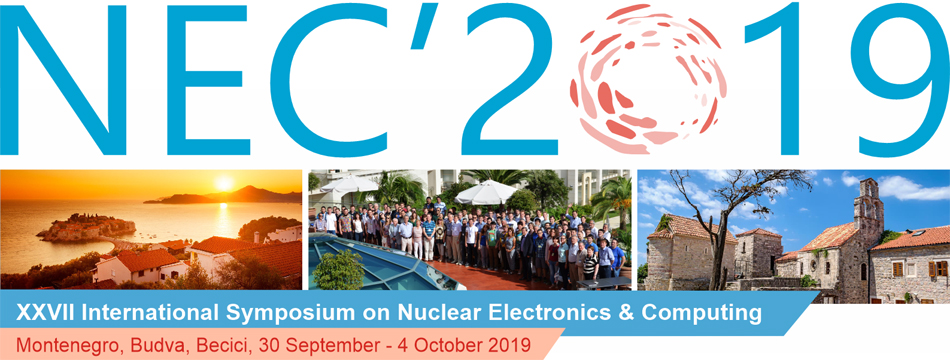Speaker
Dr
Oleg Strekalovsky
(JINR FLNR)
Description
The article describes the electronics for the time-of-flight two-arm fission fragments spectrometer COMETA-F. The time pick-off detector is comprised of thin electron conversion foil, electrostatic mirror and of two microchannel plates, supplied by Baspik, mounted in a chevron configuration. Mosaics of Si PiN diodes used to measure both energy and time-of-flight. The waveform of detected signals is digitized by V1742 modules, which sample signals through the DRS4 chip. The DRS4 chip is a switched capacitor array, which can sample the input signal at a frequency of 5 GHs. Start for registration is provided by a specially designed trigger module. The V945 discriminator thresholds are individually settable in a range from -1 mV to -255 mV via VME through an 8-bit DAC.
The use of the Si-semiconductor detectors in time-of-flight-energy spectrometry of fission fragments is known to have delicate methodological problems due to the “amplitude (pulse-height) defect” and “plasma delay” effects in the E and TOF channels, respectively. Correct accounting for both effects needs rather complicated procedure of the mass reconstruction. Using off-line algorithm and mass reconstruction procedure based on the PHD parametrization let us to reproduce quite satisfactory ion masses in a wide range of masses and energies.
Author
Dr
Oleg Strekalovsky
(JINR FLNR)
Co-authors
Mr
Alexandr Strekalovsky
(JINR)
Dmitry Kamanin
(Joint Institute for Nuclear Research)
Prof.
Yury Pyatkov
(National Nuclear Research University “MEPHI” & Joint Institute for Nuclear Research)

